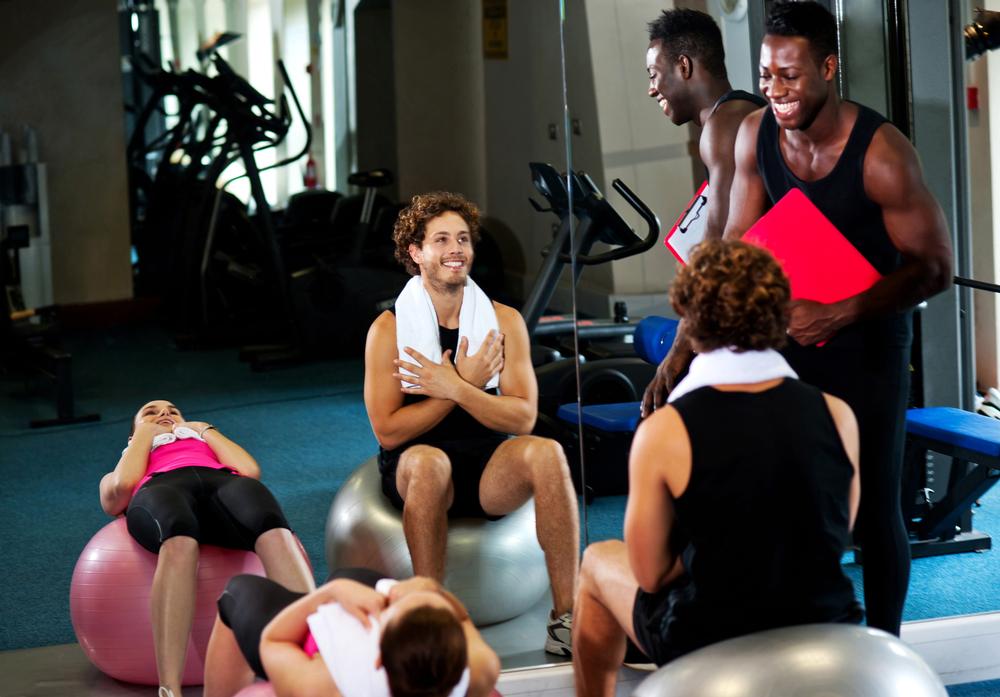Social media is a true revolution: not since Vinton Cerf and Sir Tim Berners Lee invented the internet has something had so much impact on our lives. Consider this: Mark Zuckerberg, the CEO of Facebook, has influence over one-sixth of planet Earth’s population.
A Facebook-sponsored study featured in the Daily Mail revealed that 89 per cent of people check at least three social apps on their smartphones within 15 minutes of waking up in the morning, and 47 per cent of respondents said they check Facebook while working out at the gym. It’s arguably more than a revolution – it’s an addiction that influences our decisions, our feelings and the way we live our lives.
Unsurprisingly, social media has also impacted our businesses in a very real way. The Retention People’s latest survey – which was featured in a recent Health Club Management feature (see HCM May p59) – revealed that a massive 34 per cent of the 10,000 health club/gym customers surveyed said they valued receiving club communications via social media. So what does all this mean for gym operators?
Measurable impact
One of the many ways social media demonstrates its power lies in its impact on how we market our businesses: it offers a highly cost-effective tool to complement more traditional advertising.
The average cost of a full-page advert in a regional newspaper is approximately £300. Most regional newspapers have a distribution of around 30,000, and of their distribution I might have 100 people who actually stop and read my ad as opposed to just glancing over it on the page. So for £300, I’ve engaged 100 people directly – although in fact this figure is probably on the generous side.
Meanwhile, Facebook data suggests that an average of 16 per cent of your audience will organically see each of your posts. Based on this, a Facebook page with 2,000 ‘likes’ will have the same level of engagement, if not more, from just one posting; if you were to sponsor the post, this engagement can double or triple – plus it’s all statistically measurable. And all this for £0–£12.
That said, this kind of engagement doesn’t just happen, and this is very important to understand. Social media can never be the spearhead of your marketing efforts, because it requires other forms of marketing to make people aware of your existence in the first place. People see you on leaflets or in print ads, then they Google you, then they see your website, and only then do they like you on Facebook.
Some companies now only direct people to Facebook pages on their marketing, rather than directing them to their website, as it cuts out a step in the process and creates a captive audience of subscribers. But the upfront awareness advertising is still necessary.
Correct use of social media
A simple marketing campaign might comprise leaflets, posters, email, newspaper, radio, website updates and social media, with all of these considered integral and inter-dependent elements of your overall marketing communications mix. Your main campaign theme and message should therefore translate well across all these channels, including social media.
Social media is the only part of your marketing that’s both interactive and accessible to anyone, so you should use it as a way for potential customers to get to know you better. Social media’s key role from a business point of view is to make companies easier to relate to, adding a personal touch to what they do.
Importantly, social media isn’t a broadcast medium. We’ve all been guilty of it, putting sales messages on our social profiles with last-minute promotions. The instantaneous nature of social media also makes it an attractive option for panic selling.
However, the short-term benefit often doesn’t outweigh the long-term detriment. When social isn’t kept ‘social’, you’ll find engagement soon dwindles. A simple indicator of this is how many likes/retweets/+1’s you get for each of your posts. If you’ve noticed this drop, it’s time to do something about it.
What type of posts?
There are easy ways to communicate with your different user groups.
Members want to give feedback, they want to relate to messages, and they want useful information. They don’t want sales messages or constant alerts about classes. A simple rule we use is commonly known as the 2-4-1 rule, which is that for every seven posts you create for your social media:
* Two should offer content concerning your business. Remember to keep it social, tell a story and involve your audience. A great method for engaging your audience in this scenario is tagging some of your fans in your posting – a common method used by entertainment profiles such as The LAD Bible.
* Four should offer topical information – a news article about the latest diet to sweep the nation, for example, or answers to some common questions you’ve been asked that week. Be careful to make sure these complement what you offer as a service/product; if posting links to third party websites, be sure there’s no inkling of a competitive product/service on that website.
* One can be an out-and-out sales message. Make sure there’s a sense of urgency applied to this sales message and a clear call to action. For example, a ‘no joining fee’ offer needs to include details of how people should redeem it. Even an audience on social media needs to be guided in the right direction.
So what about prospects? Research done by www.sweatband.com found that, of all the types of social media updates, those relating to health, fitness, diet and weight loss were the ones people disliked the most: 53 per cent of people highlighted these types of update as their least favourite. This suggests that, from a prospect point of view, even on social media we aren’t penetrating beyond the 13 per cent glass ceiling of gym members. For posts directed towards prospects, we should therefore avoid testimonials and focus more on the fears people have of joining. Make the gym look fun and the staff seem friendly to address intimidation.
Social media top tips
Creating a successful social media channel requires a combination of planning, spontaneity, the right tools and the ability to have fun. Here are a few ways to develop a solid social media strategy:
* Plan social media campaigns around your real-world marketing, so they’re based on constantly changing themes rather than the same old class updates, joining offers and supplement offers.
* Pick a great management tool for your social media activity that ties in to your central marketing campaign: you can easily pre-schedule using a social media scheduling tool. There are plenty of free tools online, but we use Buffer, which is something many bluechip companies use nowadays. It gives you the freedom to keep your social media accounts ticking over with minimal management, which in turn gives you the freedom to have more spontaneous fun with your social media.
* Share so people care. Make sure you share those strange, humorous, exciting moments on your social media channels as and when they happen. Sharing things as they happen, no matter how odd or embarrassing, makes your business look more human and approachable.
* Don’t broadcast. You may not think you’re doing this very often, but you probably are. If all you’re posting about are things your members can participate in, purchase or book, all you’re actually doing is trying to sell. Try posting something solely for entertainment purposes and watch the change in response. Remember the 2-4-1 rule.
* Link your social channels to everything. Online, link all your activity back to your social media channels – email, website updates and blog posts. And do the same in reverse: whenever you’ve updated content elsewhere, make sure it goes on your social channels and pretty soon you’ll have the makings of a content network.
Just good friends
Whether your business is just you or you oversee an office of hundreds, whether you operate a small business or you run a multinational, social media is a force that can benefit any business if leveraged in the right way.
The key principle of your interactions should be to make your company appear as human as possible. If the buying public views your company as having its own personality, it makes your business more relatable. Social media is the only marketing channel available to you that allows customers to befriend your business – and we all trust the opinions and recommendations of our friends.
























































